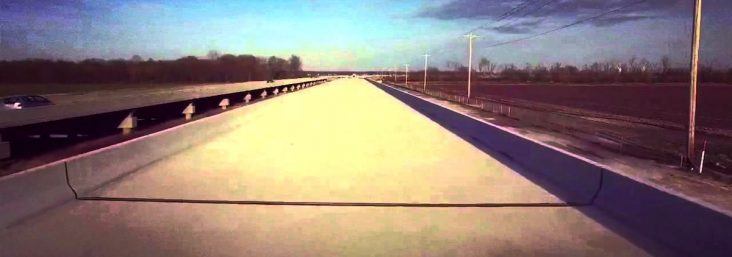Significant highway project connecting Jonesboro to Blytheville set to begin; bridge work in Pocahontas ongoing
by November 17, 2016 4:17 pm 796 views

A portion of Arkansas 226 under construction.
For many years, residents in Jonesboro and Blytheville have sought an improved highway to connect two of the largest cities in the region. Arkansas 18 is the primary route between the two. Plans to four-lane the highway have been in the works for years, but significant projects along the route have finally been approved, according to Arkansas Highway and Transportation Department District 10 Engineer Brad Smithee.
A $39 million highway expansion project from Manila to Big Lake is set to begin in January, according to AHTD. The three-mile stretch is fraught with problems, and that’s why the cost is so high, Smithee said.
“It’s really going to be a complicated project … it’s going to be difficult to say the least,” Smithee said. “This project is different from anything else we’ve attempted in a very long time.”
Federally and state protected lands abut the route and the highway has three bridges to replace. Bridge work along a heavily used road can be problematic and replacing three will be a significant challenge, Smithee said. Workers will have to build one side of the bridge, and then transfer traffic there to build the other side.
“It’ll be tedious, to say the least,” he said.
The project has been allotted 800 working days, meaning it could take five or more years to complete. AHTD uses a formula with contractors to determine a “working day.” If 60% of the contractor’s workforce can work 60% of a day, it counts as a working day.
For example, if a contractor has 10 workers and they’re scheduled to work a 10-hour shift starting at 6 a.m. then at least six workmen have to work until noon, or the day doesn’t count. This helps the state account for rainy afternoons and other weather events that might hamper construction, Smithee said.
AHTD meticulously chronicles these work days to ensure projects are completed on time, he said. The work days on this project may be measured differently, however, because of the potential environmental and unusual construction problems. The state doesn’t count any work days from Dec. 21-March 15, according to AHTD.
“We recognize it’s difficult to get any good work days in during that time of year,” Smithee said.
Another AHTD project in Northeast Arkansas is also underway. AHTD is about 10% finished with a bridge replacement on U.S. 67 in Pocahontas. The bridge spans the Black River. Traffic along the bridge has been cut down to one lane on each side, and it makes for a slightly longer trip through Randolph County’s largest town and county seat, officials said.
The $10.133 million project is expected to be finished in early 2018, according to projections. Contractors have 285 working days on that project. It’s part of the final stretch of U.S. 67 that is not four-laned from Dallas to the Missouri border. Roughly 27 miles of the highway are only one lane from Pocahontas to Corning. Once the highway is expanded, travel between Dallas to St. Louis and even further north to Chicago will be much quicker and safer, Smithee said. It could be years before that is a reality, he said.
In August, the final stretches of Arkansas 226 and U.S. 67 connecting Jonesboro and Walnut Ridge/Hoxie with a four-lane highway to Little Rock opened. Traffic counts haven’t officially been calculated along the newly expanded route, but Smithee said he thinks the traffic uptick has been significant.
From Arkansas 230 to just south of Hoxie, AHTD projected 7,200 vehicles would drive that section of U.S. 67 daily. The projection was formulated almost 20 years ago when the project was first proposed, meaning the actual counts could be much higher, he said. It could take up to a year to compile the traffic count data, but Smithee said his department may request an earlier assessment.
“Our guys working in Lawrence County, especially, and in Pocahontas have seen the number of vehicles on the highway rise dramatically,” Smithee said. “The number of large trucks has especially increased.”
